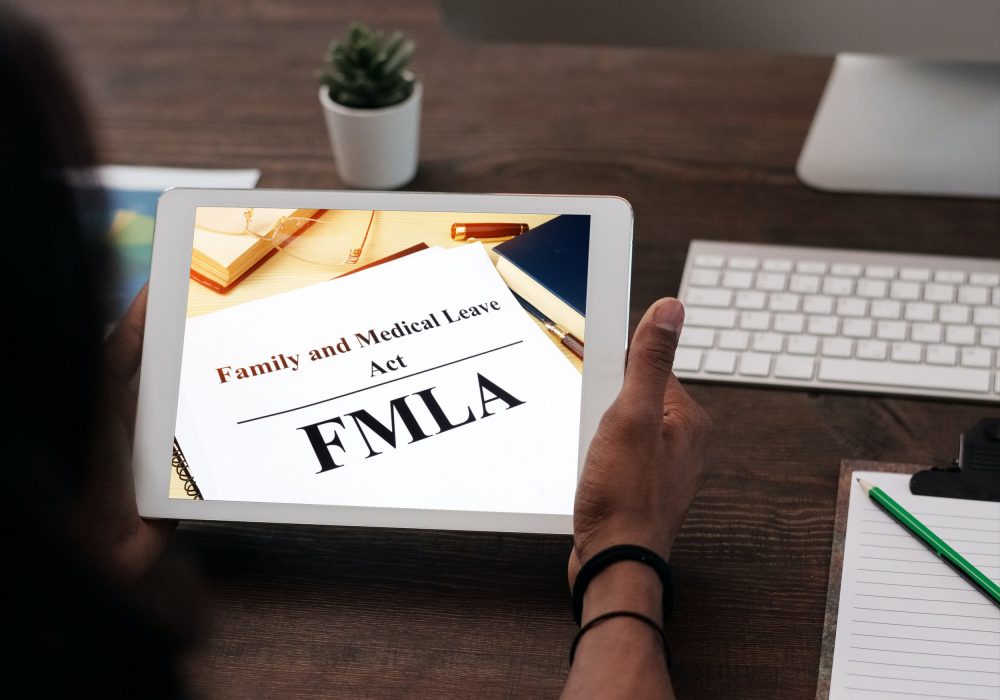
By Anthony Kaylin, courtesy of SBAM-approved partner, ASE
Intermittent FMLA is one of the most difficult issues for HR professionals. It can be difficult to manage, and personal liability could attach if they interfere with FMLA leave. Therefore, a conservative approach is recommended. However, a recent Federal 6th Circuit of Appeals case (which covers Michigan) may provide some helpful guidance.
In Render v. FCA US, LLC, No. 21-2851 (6th Circuit Court of Appeals, 11/16/22), Render started working for FCA on January 3, 2013, as an assembly line worker at FCA’s Trenton Engine Complex. Eventually he moved into a more specialized position cutting cranks for engines. Render applied for intermittent FMLA leave on October 24, 2017. Sedgwick, FCA’s third party leave administrator, replied on October 26, 2017, asking Render to provide medical documentation to support his request. Render’s doctor then submitted a medical certification form on November 9, 2017. His doctor noted that he needed intermittent FMLA leave to manage his major recurrent depression and moderate/generalized anxiety disorder. The medical certification form noted that Render was unable to perform “[a]ny/all duties related to [his] job during [a] flare-up of symptoms.”
Render therefore requested up to three to four days of intermittent leave per month to manage his flare-ups. Sedgwick responded with a second letter on November 14, 2017, with the subject “Approval of Intermittent Employee Medical Leave.” (Nov. 14 Sedgwick Letter, R. 22-15, Page ID #191.) The letter conditionally approved Render’s request and noted that he could take up to four FMLA leave days per month.
The letters from Sedgwick gave Render conflicting instructions about how to call in to use his intermittent FMLA leave days.
The first letter from Sedgwick (asking Render for more medical documentation) gave the following instructions:
As a reminder, you are required to report all absences and tardiness in accordance with FCA’s mandatory Call-in Procedure. A failure to properly report any absence or tardy from work may result in disciplinary action, up to and including discharge. The Call-in number to report all absences is as follows: 1-800-810-[xxxx]. Absences and tardiness can be reported 24 hours, 7 days/week.
In addition, you must contact the FCA Service Center at 1-888-322-[xxxx] to confirm your first day of absence. You will be advised of your eligibility determination within 5 business days (absent extenuating circumstances) of receiving notice of your first day of absence.
In the second letter, more specific instructions as to intermittent leave were provided:
Intermittent Absence Time Reporting – Since you have requested intermittent leave, you are required to report all absences and tardiness in accordance with FCA’s mandatory Call-in Procedure. A failure to properly report any absence or tardy from work may result in disciplinary action, up to and including discharge. The Call-in number to report all absences is as follows: 1-800-810-[xxxx]. Absences and tardiness can be reported 24 hours, 7 days/week.
At this point in time, Render was approved and told how to contact the company when he was using FMLA days and what could possibly happen if he failed to follow the process.
On four occasions, Render contacted the call-in line and reported he would be absent or tardy because he was “having a flare up,” did not “feel good at all,” or he had “been sick the last few days.” At no time did he mention FMLA leave. His absences were considered unexcused, and then he was terminated for absenteeism. Render then sued for violating his rights to FMLA and retaliated for taking FMLA leave. Summary judgement was granted to the company at the trial court level.
The 6th Circuit reversed the trial court. First, although the intermittent leave regulations do not provide that the leave is foreseeable, the court stated that if the initial reason is known, then the leave is foreseeable, even if the timing is not. Next, the 6th Circuit stated that Render only had to give notice when he first applied for intermittent leave or each time. The court referred to the regulations that “whether FMLA leave is to be continuous or is to be taken intermittently…notice need only be given one time, but the employee shall advise the employer as soon as practicable if dates of scheduled leave…were initially unknown.” 29 C.F.R. §825.302(a)
Finally, the court stated that once Render gave his initial notice, his subsequent call offs did not need to “specifically reference either the qualifying reason for leave or the need for FMLA leave.” The court stated Render’s reference to “flare-ups” was sufficient because his FMLA medical documentation repeatedly referenced that phrase.
The takeaway for HR is that even if you have a process, make sure that employee expectations are clear. Second, review the process for receiving and addressing an employee’s request for intermittent leave, and if there is none, work with legal counsel to create one. HR (not frontline supervisors) should handle these requests. Finally, HR and supervisors should be familiar with the FMLA regulations and if not, take FMLA training.
Source: Frost Brown Todd LLP 1/14/23